Sanded Through Veneer to Particle Board
Have you found you’ve sanded through veneer to particle board while trying to restore a piece of furniture? Don’t worry, it happens to the best of us! Sanding furniture can be a tricky process, especially if you’re not familiar with different types of materials and finishes.
We’ll tackle how you shouldn’t sand through veneer in the first place, how to fix it if it does happen, and tips to avoid this issue in the future.
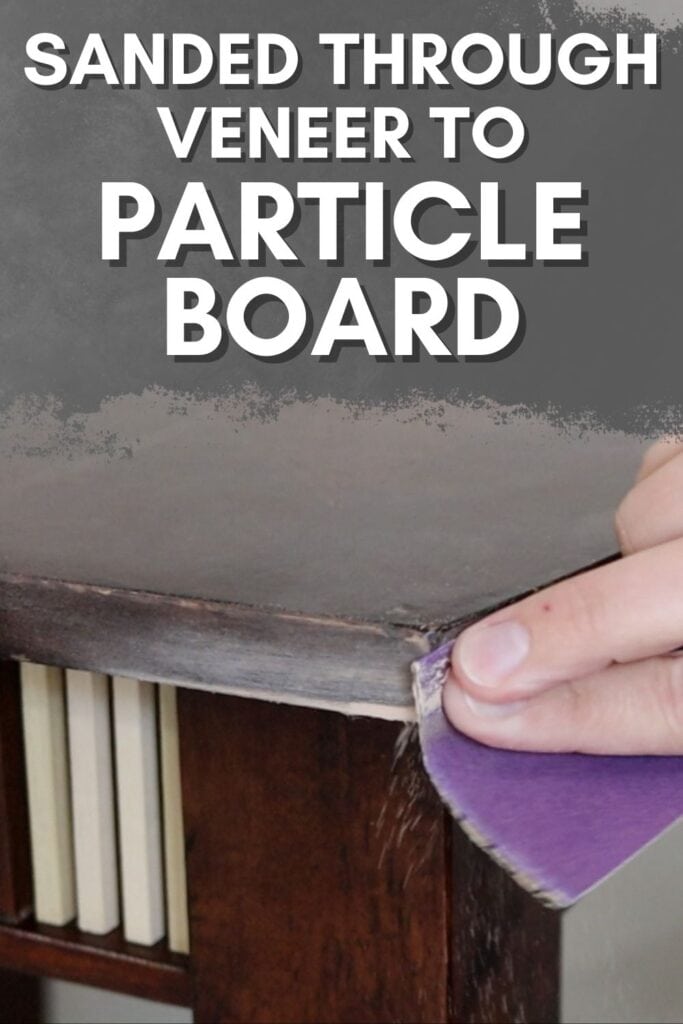
What is veneer? Veneer is a thin layer of wood that is glued onto a surface to give the appearance of solid wood. It usually covers materials like particle board, MDF, or lower quality wood.
While some furniture may be made of solid wood all the way through, most furniture today is made with veneer to make it look high quality and expensive without the cost.
However, not all furniture is 1 piece of solid wood through and through. There may be particle board or other materials below the veneer layer, which can be easily sanded through if you’re not careful.
I learned this the hard way and if you’re reading this, it sounds like you may have learned the hard way too. But let’s tackle the issue head on!
What is Particle Board On Furniture
First, let’s know more about particle board. Particle board is engineered wood made with wood chips, shavings, and resin.
It is compressed together to create a durable and affordable material for furniture.
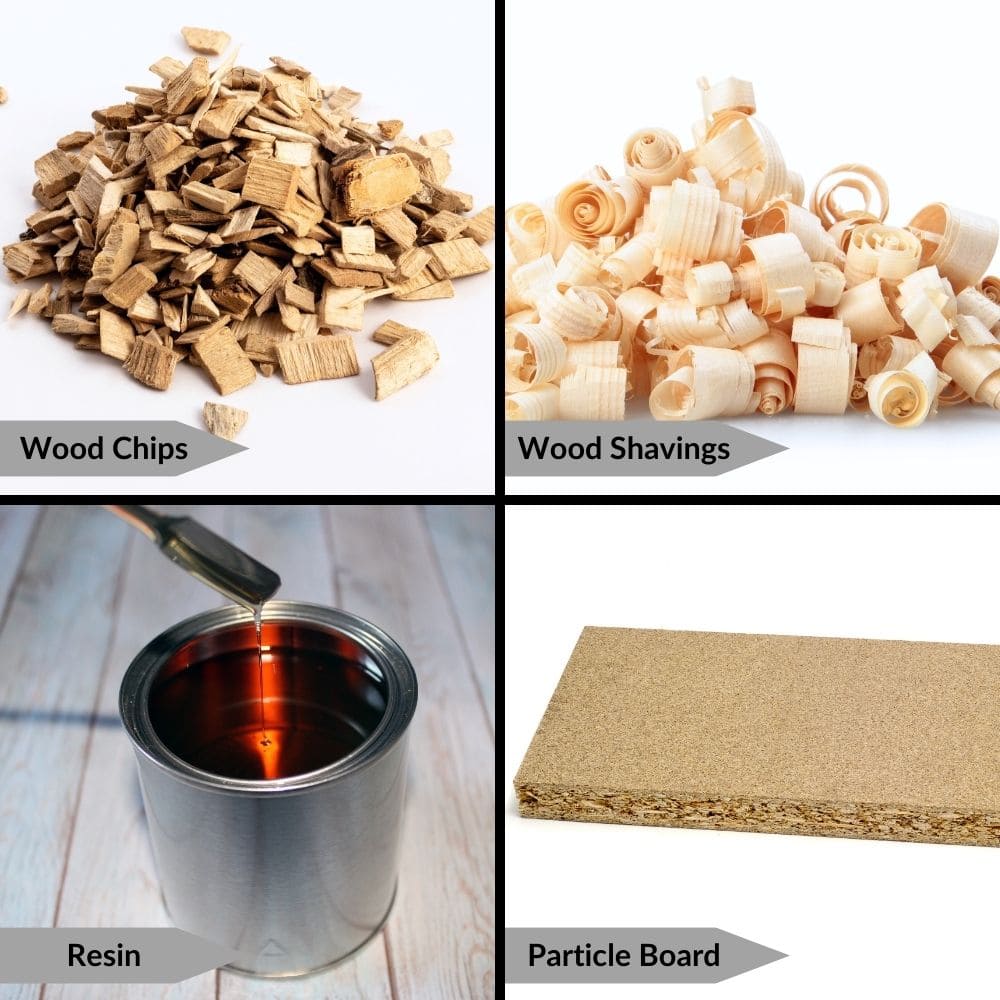
Particle board is often used as a substitute for solid wood in furniture, as it is cheaper and more environmentally friendly due to its use of recycled materials.
While particle board may not have the same durability as solid wood, it can still last up to 25 years with proper care and maintenance.
This makes it a great option for those looking for affordable yet long-lasting furniture pieces.
The Problem with Sanding Through Veneer
Sanding through veneer can be a big problem because it exposes the particle board or other materials underneath.
You might even wonder: can veneer be sanded? Check out this post to learn more about sanding veneer.
This can create a patchy and uneven look, making the furniture appear cheap and poorly made.
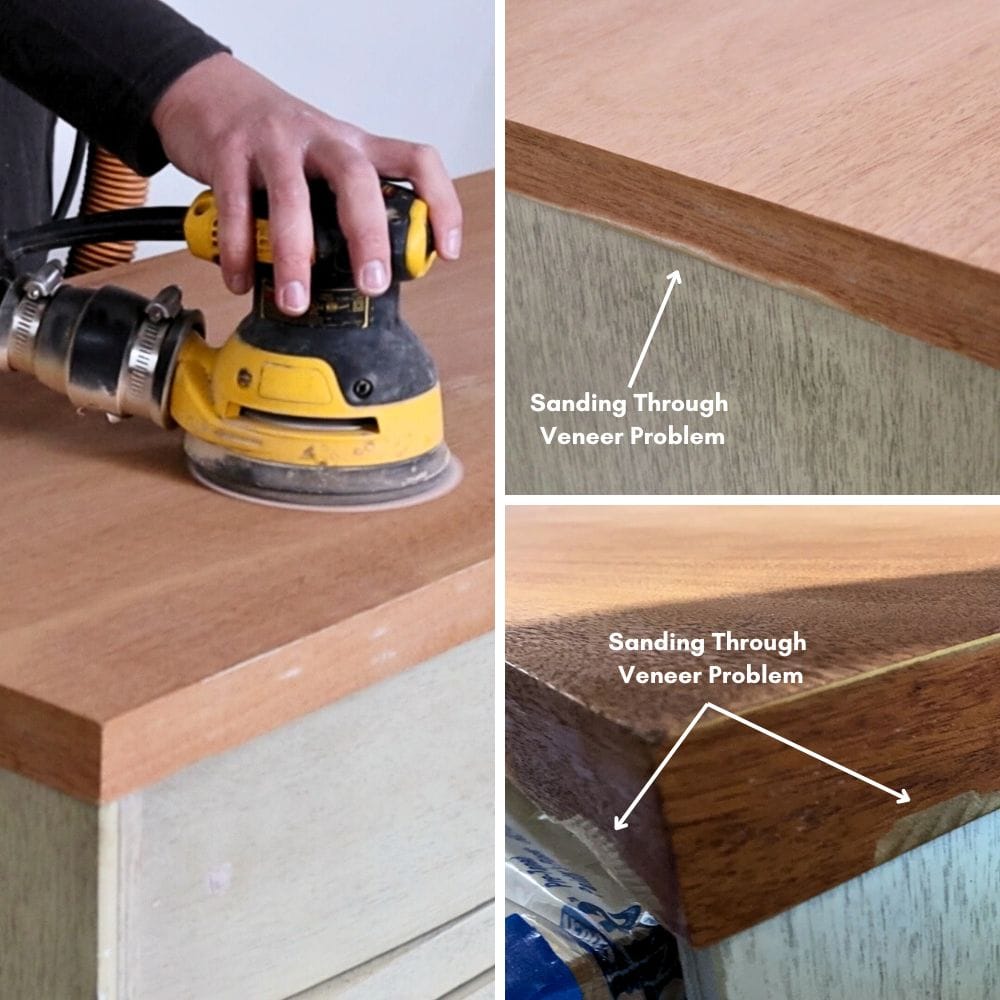
It also means that any stains or finishes you apply will not adhere properly and may end up looking blotchy.
Additionally, sanding too much through the veneer can weaken the structural integrity of the furniture.
Particle board is not as strong as solid wood, so if you sand too much, the furniture may become unstable and prone to damage. This can result in costly repairs or even the need to replace the entire piece.
How to Fix Sanding Through Veneer to Particle Board
But don’t worry, all hope is not lost! There are ways to fix this issue if you have sanded through veneer to particle board.
As an Amazon Associate, I earn from qualifying purchases. I also may earn from other qualifying purchases with other companies or get free product to review and use. All opinions are my own.
Paint Particle Board Furniture
Painting particle board furniture is an easy and great option if you have sanded through veneer. It allows you to cover up any damage and create a whole new look for your furniture.
You can choose from a variety of colors and finishes, making it easy to match your existing decor or completely change the style.
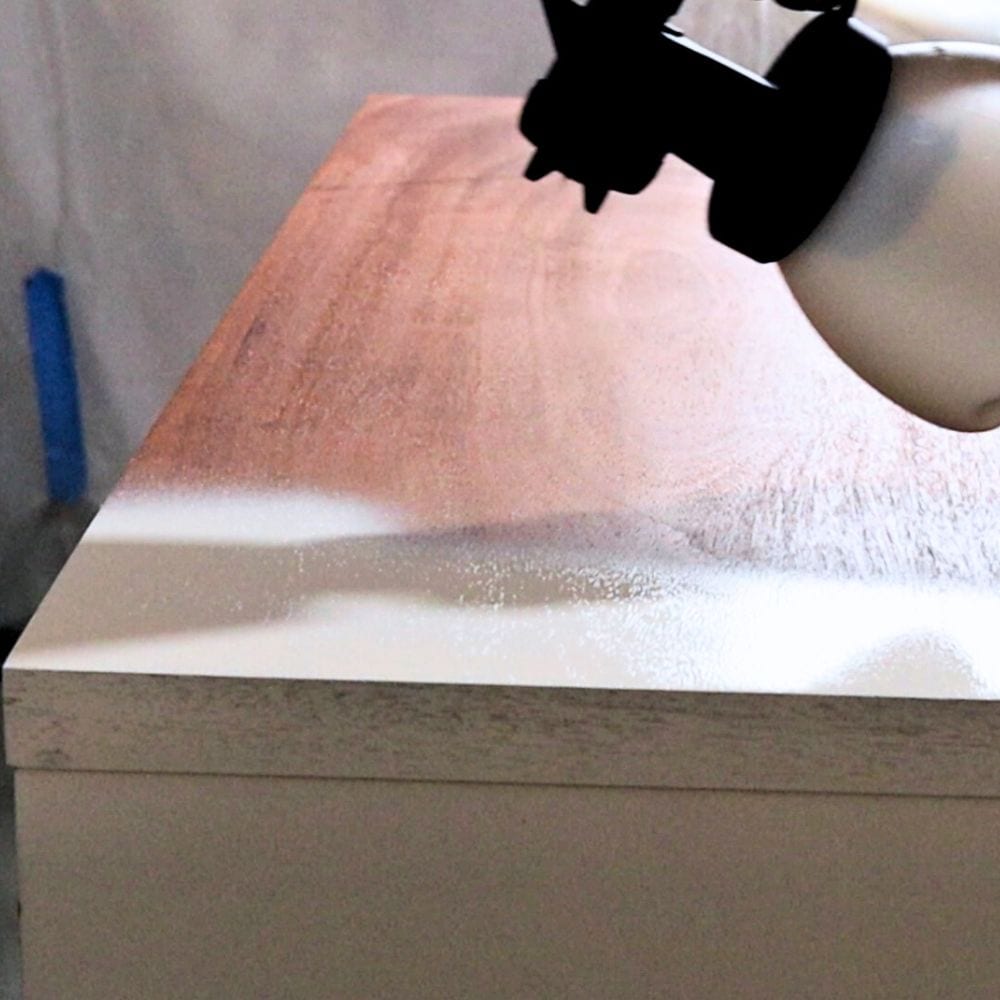
You may need to smooth out any rough edges with wood filler before painting to get a smooth surface. Here are the best wood fillers for furniture you can use.
Once the filler is dry, sand it down then apply a coat of primer before painting. This guarantees that the paint adheres properly and stops stains from coming through paint.
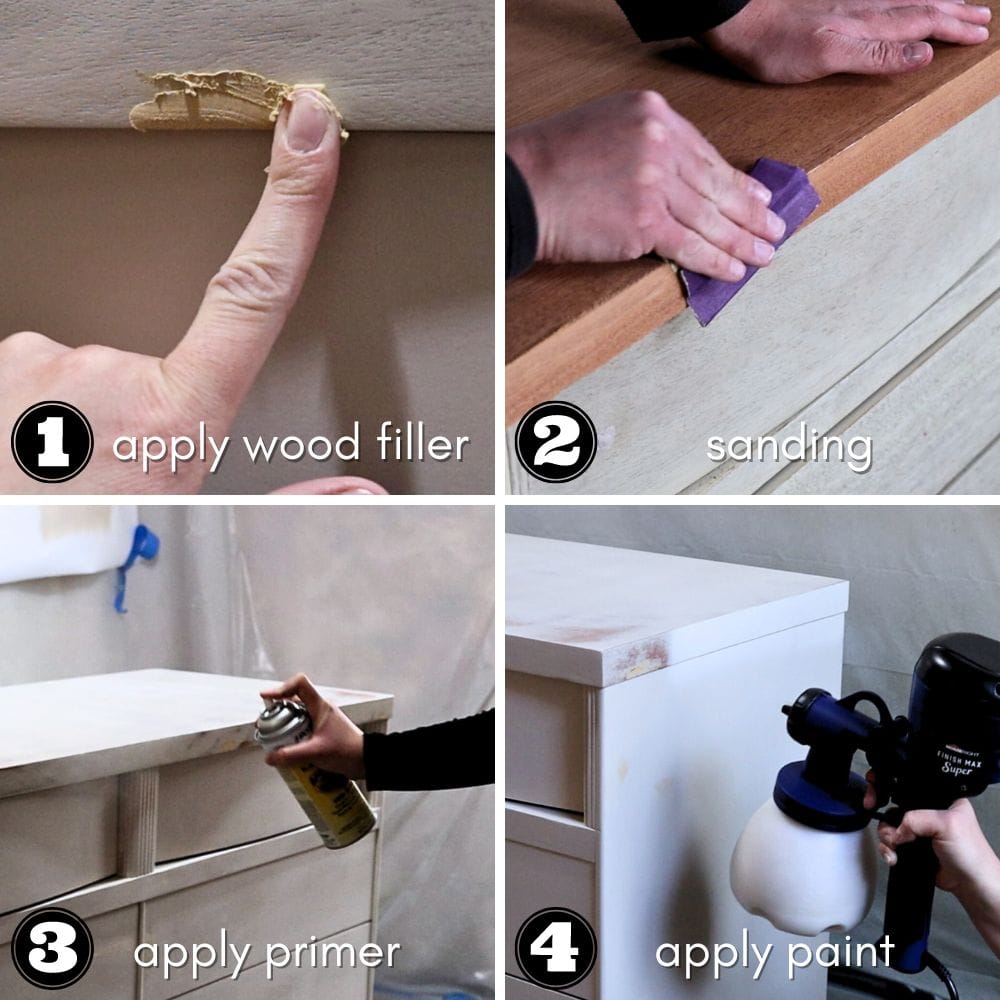
You can then proceed to painting. Check out our how to paint particle board furniture post and use it as your guide for this step. Painting will hide the imperfections you made from sanding through the veneer.
Stain Particle Board Furniture
Staining particle board furniture is another awesome option if you want to maintain the natural wood look of your piece. But if you’ve sanded a big hole through the veneer, this may not be possible.
However, if you caught it early on and only have a small imperfection, you may still be able to get a consistent stain by using gel stain or a wood stain repair kit.
Here’s our list of the best wood stains for refinishing furniture to learn more about the pros and cons of each type of wood stain.

Gel stains are great for particle board furniture because they sit on top of the surface and penetrate into the wood and particle board.
This allows you to build up coats and hide any imperfections. Apply 2-3 coats of gel stain for good coverage.
You can also use a wood stain repair kit to match the color of the particle board with the surrounding wood.

This may also take multiple layers – the stain kit comes with different shades that you can mix, match, and build up to create the perfect color.
Check out our wood stain repair post to see and learn how we used a wood repair kit.
Tips for Avoiding Sanding Through Veneer
Now it’s really best to avoid this problem altogether! While it may not always be possible, there are some tips and tricks you can use to avoid sanding through veneer while refinishing furniture.
The first tip is to use a chemical stripper to remove the finish from wood instead of sanding aggressively.
This will prevent you from having to sand too much and potentially sanding through the thin layer of veneer.

If you’re sanding with a power sander, make sure to turn the speed down if you have variable speed, and use a higher grit like 180 grit sandpaper or 220 grit sandpaper.
Using the sander with low speed and sandpaper with higher grit is less aggressive and will not remove as much material. This reduces the risk of sanding more than you intend.
Additionally, try to avoid sanding near the edges of the furniture as it is easy to accidentally sand through the veneer in this area.
You can use a carbide scraper or sand by hand in the direction of the wood grain on these delicate areas.
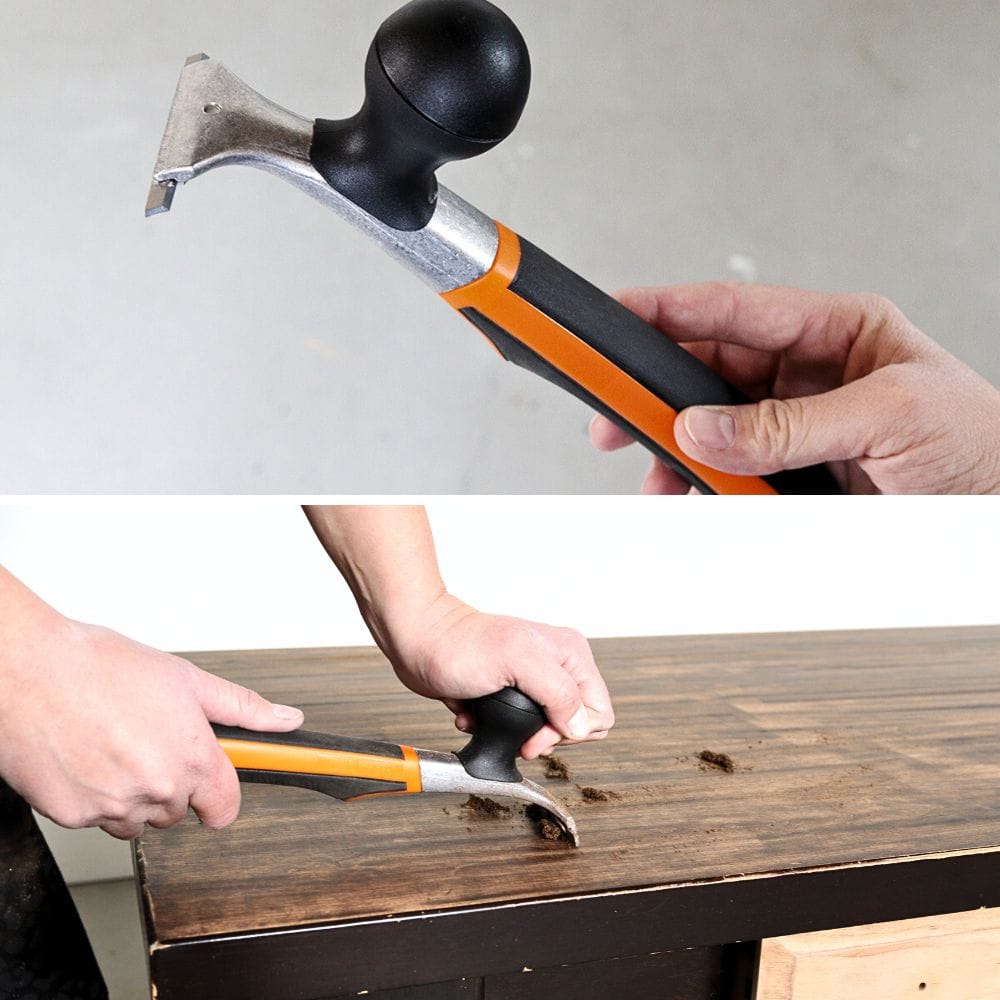
It may take more time and effort, but it will prevent any accidental damage to the veneer. Remember, prevention is always better than fixing a mistake!
Sanding through veneer to particle board can be a frustrating mistake, but it’s something you can still fix!
Whether you choose to paint or stain your furniture, there are ways to cover up the damage and create a beautiful piece.
However, it’s always best to try and avoid this problem from the start by using gentle sanding techniques and being careful around delicate areas.
With proper care and maintenance, your particle board furniture can last for many years to come.
More Sanding Furniture Tips
- How To Sand Down Wood
- How to Sand in Tight Spaces
- A Foolproof Way to Avoid Tricky Sanding
- Easy Way to Sand Spindles
Follow us on YouTube to get more tips for painting furniture.
Or share your project with us on our Facebook Group and be part of our community. See you there!
